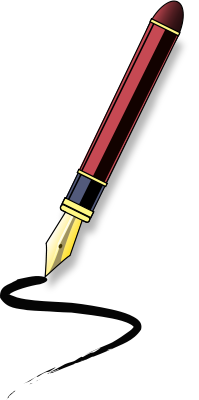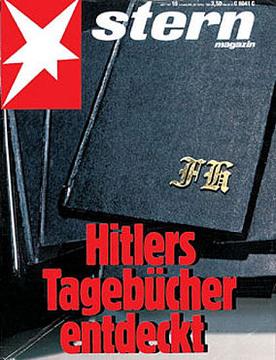 The History of Handwriting Analysis:
The History of Handwriting Analysis:Handwriting Analysis (AKA graphology) has been shown to be highly reliable in crime scene investigations for their ability to pinpoint a criminal. For example, a man might forge a letter from George Washington and claim sell it to the Smithsonian for several thousand dollars. Handwriting is similar to fingerprint because they are both unique to each person.
 |
| Aristotle |
Over the last several decades, countries around the world have used handwriting analysis for Medical work, Legal Work, Business work, educational work, and several others.
The 12 Handwriting Characteristics:
- Line Quality- are the pen lines flowing and smooth? or messy and shaky?
- Spacing of Words and Letters- is the spacing between words and letters large or narrow?
- Ration of the Relative Height, Width, and Size of Letters- are the attributes consistent?
- Pen Lifts and Separation- are the letters separated or connected like cursive?
- Connecting Strokes- are the letters connected in some way?
- Beginning and Ending Strokes- do they flow downward. straight, curled or upward?
- Unusual Letter Formation- any strange or unique way of writing letters?
- Shading or Pen Pressure- are the strokes thick and wavy, or thin and smooth?
- Slant- do the letters slant in a left or right direction?
- Basline Habits- is the writing generally above or below the line?
- Flourishes and Embellishments- are there any traits that make the text look more appealing and fancy?
- Diacritic Placement- how are the "t"'s crossed and how are the dots in "i" and "j" shaped?
Handwriting Analysis Template Activity
What evidence is there that lets us know the second writing was indeed a forged copy?
What evidence is there that lets us know the second writing was indeed a forged copy?
 Free- Hand Forgery evidence:
Free- Hand Forgery evidence:1. the line quality is a bit shaky and wavering
2. there is a lot of pen pressure.
3. the beginning and ending strokes do not match
4. the "t"'s are not crossed correctly

Traced Forgery:
1.the line quality is messy and shaky
2. there is a lot of pen pressure
3. there is an unusual letter formation
4. the letters slant in the wrong direction
Due to the results, I believe the traced forgery would be easier to perform.
Reflection of the handwriting forgery template/Check Forgery Activity:
For this Activity, we simulated an attempted forgery by writing the sentence "the quick fox jumps over the lazy dog" in print and cursive. Later, we would analyze the writing and write down the characteristics of the words. Finally, Fatima would forge my writing by performing the freehand forge and Travis would perform the traced forge. Afterwards, all of my partners were able to determine who was the original writer. We discovered that the most common characteristics were: we wrote while slanting to the right, there were small spaces between words, and we all had Embellishments.
In addition to the Handwriting Analysis Template, we also simulated the forgery of a check. We simply filled out the check with any information and tore it up into shreds. Afterwards, I exchanged the bits with my partners and we had to determine who was the owner of the check. We did this by observing the characteristics of the writing.
In addition to the Handwriting Analysis Template, we also simulated the forgery of a check. We simply filled out the check with any information and tore it up into shreds. Afterwards, I exchanged the bits with my partners and we had to determine who was the owner of the check. We did this by observing the characteristics of the writing.
Famous Forgery Case:
The Hitler Diaries of 1983:
 This case is perhaps one of the most major forgery cases in the world. It dealt with the "diaries" of Adolf Hitler from which the West German news "Stern" published a few excerpts. The news company was so determined to obtain the diaries that they paid 10 million dollars for the sixty small books and a special volume about Rudolf Hess's flight to the U.K. for a period of more than 18 months, Stern's parent companies performed three handwriting analysis tests on the documents. All of the tests identified Hitler as the original. However, the documents would later be proved to be a fraud. later, the West German Bundesarchiv would prove that the documents were forged. They determined that the paper was made with modern ink and was historically incorrect. Basically, the main content of the diaries was copied, but the forger added in extra comments. Finally, the criminal was found to be Konrad Kujau. In 1984, he was sentenced to 42 months in prison.
This case is perhaps one of the most major forgery cases in the world. It dealt with the "diaries" of Adolf Hitler from which the West German news "Stern" published a few excerpts. The news company was so determined to obtain the diaries that they paid 10 million dollars for the sixty small books and a special volume about Rudolf Hess's flight to the U.K. for a period of more than 18 months, Stern's parent companies performed three handwriting analysis tests on the documents. All of the tests identified Hitler as the original. However, the documents would later be proved to be a fraud. later, the West German Bundesarchiv would prove that the documents were forged. They determined that the paper was made with modern ink and was historically incorrect. Basically, the main content of the diaries was copied, but the forger added in extra comments. Finally, the criminal was found to be Konrad Kujau. In 1984, he was sentenced to 42 months in prison.
6 comments:
The pictures really complement the text well. The post is also well researched and written.
This is fantastic to read about! who knew there where so many characteristics about our handwriting.
I never noticed the slant in my writing or the way I do my "t"s
great job ^-^
you organized everything so neatly that it was easy to follow along and understand. I found the history to be really interesting; Even back in 330 B.C. people could think well.
I like the activity you did :) sounds fun.
I wonder how the criminal was able to forge the copy so well that he was able to fool the employees at first.
Interesting case.
Anyways, you did so well on this :D
you are my lil bro huh :) ?
I like the size of your font because it's easy to read. I may need to change mine now. Again you have the same court case as me and it looks good. We must really think alike :)
you have some of the same history as mine, in that case...great job :D also i like your fish projection
Post a Comment